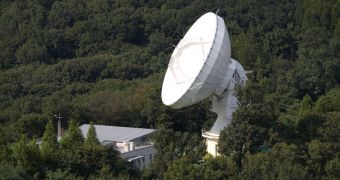Astronomers in Australia and South Korea recently managed to link five individual radio telescopes, producing a single, massive observatory, some 8,000 kilometers (5,000 miles) across.
The tool works through interferometry, a process that enables multiple telescopes to be networked together. When properly adjusted, interferometry allows the instruments to operate as a single telescope, with an aperture equal to the longest distance between any two of its points.
In this latest instance, three Australian telescopes – two in New South Wales and one in Hobart, Tasmania – were linked with two South Korean observatories, one in the capital city, Seoul, and another in the southeastern city of Ulsan.
These instruments are separated by 5,000 miles of ocean and land, investigators say. Nevertheless, the resulting telescope has roughly 100 times the resolve power of the NASA Hubble Space Telescope.
Australian authorities say that the project is part of the country's ongoing scientific cooperation with Asia. Over the years, the nation has created similar links with countries such as Japan and China.
“This is another step in Australia's ongoing collaboration with Asia in the field of radio astronomy,” explains the astronomy chief of the Commonwealth Scientific and Industrial Research Organization (CSIRO), Philip Diamond, in a March 15 statement.
All the telescopes observed the distant galaxy J0854+2006 for about 5 hours simultaneously. Data on the object, which is located about 3.5 billion light-years from Earth, were streamed in real-time, at a rate of 64 megabytes per second, and directed to Curtin University, in Australia.
Experts here processed the information on the go, as it became available. “We were observing at a high frequency, which can be challenging for this technique, but the experiment worked extremely well,” CSIRO expert Chris Phillip adds.
The same type of link will be required to operate the planned Square Kilometer Array (SKA), a 3,000-antenna radio observatory that is to be completed by 2024. At a cost of nearly $2 billion, the instrument will be the most advanced radio astronomy tool in the world.
“Australia has many decades of experience with these long-distance linkups. And we are committed to scientific partnerships with countries in our region and elsewhere – another reason why Australia would be an excellent choice as SKA host,” Diamond concludes, quoted by Space.

 14 DAY TRIAL //
14 DAY TRIAL //